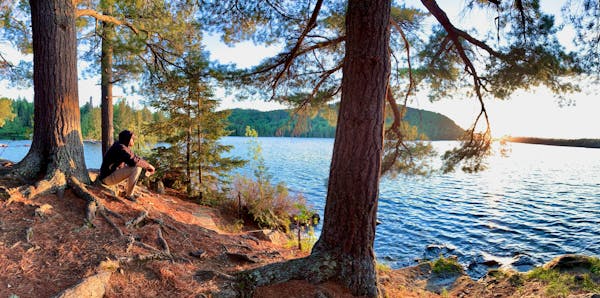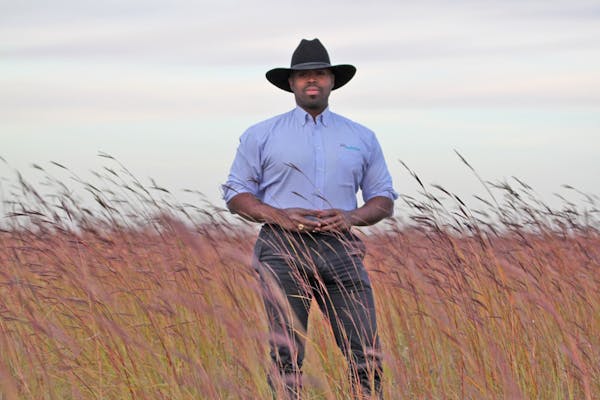Some deer hunters kill deer. Some deer hunters don't kill deer. And increasingly, some deer hunters don't show up at all.
Reasons for this are almost too many to count. But fundamental is that older deer hunters — those from the baby boomer generation — are graying out, which is a euphemism that means "getting too old.''
Problems that follow this decline also are almost too many to count.
One is that the agency getting paid to manage the state's deer, the Department of Natural Resources (DNR), is taking a more than a $1 million hit to its budget every year another 1% to 3% of Minnesota deer hunters quit the pastime and/or aren't brought into the hunting fold.
The accompanying graphic shows the battle being waged by wildlife managers in Minnesota and waged as well by scores of conservation and wildlife groups whose missions are similarly funded by participation.
Nationwide, a similar, though less dramatic, falloff is evident among anglers. But the decline among hunters is more difficult to solve because hunting can be more challenging than fishing to learn and become proficient at, especially among people from nonhunting families.
"Every year we're losing deer hunters,'' said Barb Keller, DNR big game program leader. "The problem has been well known for some time, particularly among Midwest wildlife managers, and I don't know of any state that's figured out yet how to replace the baby boomer generation of hunters.''
Keller cites the loss of about 10,000 Minnesota deer hunters in the 50-55 age group between 2015 and 2021 as representative of the decline among older hunters.
A half-century ago, those hunters would be replaced by youth coming into the sport. But America was more rural then than it is today, and hunting was more frequently and more easily passed down from parent to child.
Now, most of the state's population resides in the Twin Cities, Rochester, St. Cloud and Duluth, and kids living in those cities often are subject to demographic, sociological and other influences far different from those of yesteryear.
These include but are not limited to an increase of single-parent families, a lack of hunting tradition in those families, an increased emphasis on team sports in school, a shortage of expendable income, a lack of ready access to hunting lands — and of course the influence of phones and related media distractions.
If a solution isn't found, the economies that deer hunting drives in many of the state's rural communities will be diminished and the tradition that deer hunting represents in Minnesota culture will fade.
"Deer hunting is one important way many Minnesotans connect with nature,'' Keller said. "It's not the only way, but it's one way. Deer hunters' license purchases also fund a variety of habitat initiatives by the DNR and by wildlife groups that benefit not only deer but many other wildlife species.''
Participation declines are similarly evident among Minnesota small game hunters. But the falloff among deer hunters is potentially more serious because more Minnesotans hunt deer than hunt pheasants, ducks and grouse combined.
"In 2015 we had 502,648 deer hunters and in 2021 that number had fallen to 465,412,'' Keller said.
In the same span, the number of young people ages 13 to 18 entering deer hunting declined by about 1,000.
James Burnham is the DNR hunting and angling recruitment coordinator, making it his job to figure out a way to stabilize, if not increase, hunter numbers.
"At its core, recruiting hunters is about relationships,'' Burnham said. "And relationships take time. Generally, to get someone who's never hunted before to being a hunter requires three to five years, particularly if they don't come from a community with a hunting tradition.''
The DNR works with partner conservation groups, sponsors special youth hunts and hosts classes for "adult onset'' hunters, meaning those who at an older age want to hunt but don't know how.
"There are tremendous individual successes within these programs,'' Burnham said. "But having a large-scale effect on the problem is difficult.''
This year, 16 adults entered the DNR's learn-to-hunt program, which the agency restarted after a two-year pause because of COVID-19. Next year, more participants are expected.
Orvis Lunke, 78, of Grand Marais, Minn., wishes the DNR well in its effort to increase hunting participation. But he's not hopeful.
"We had 14 in our bunch that hunted deer up here, now there's just five of us,'' he said. "Three of us are between 75 and 80. One is 60 and one is 50. Everyone's kids are scattered, or they don't have kids. Even among grouse hunters, you just don't see many young people. I don't know if it's the electronics or what.''
The good news, Burnham said, is that the DNR's adult onset classes have shown that women who haven't been previously exposed to hunting, but who are interested in the pastime, will come to hunting if given a chance. The same is true for members of minority groups, he said.
But resources are needed to expand the program.
"It's a tremendous model and it's proven,'' he said. "But to reach more potential hunters we would need more money and people.''

Anderson: Celebrate Earth Day by rekindling real connection to nature
Anderson: Anglers protesting tough new Mille Lacs rules are wrong

Anderson: Courts, not politicians, should rule on Red Lake, White Earth lands

Anderson: Multimillion windfall gets invasive carp deterrent moving
![A young whitetail deer searches for food as another blanket of snow coats the arrowhead. ] Minnesota -State of Wonders, Arrowhead in Winter BRIAN PETE](https://arc.stimg.co/startribunemedia/WK32UWWY6FKNWJUIYCJ6ZPT4AU.jpg?h=91&w=145&fit=crop&bg=999&crop=faces)


